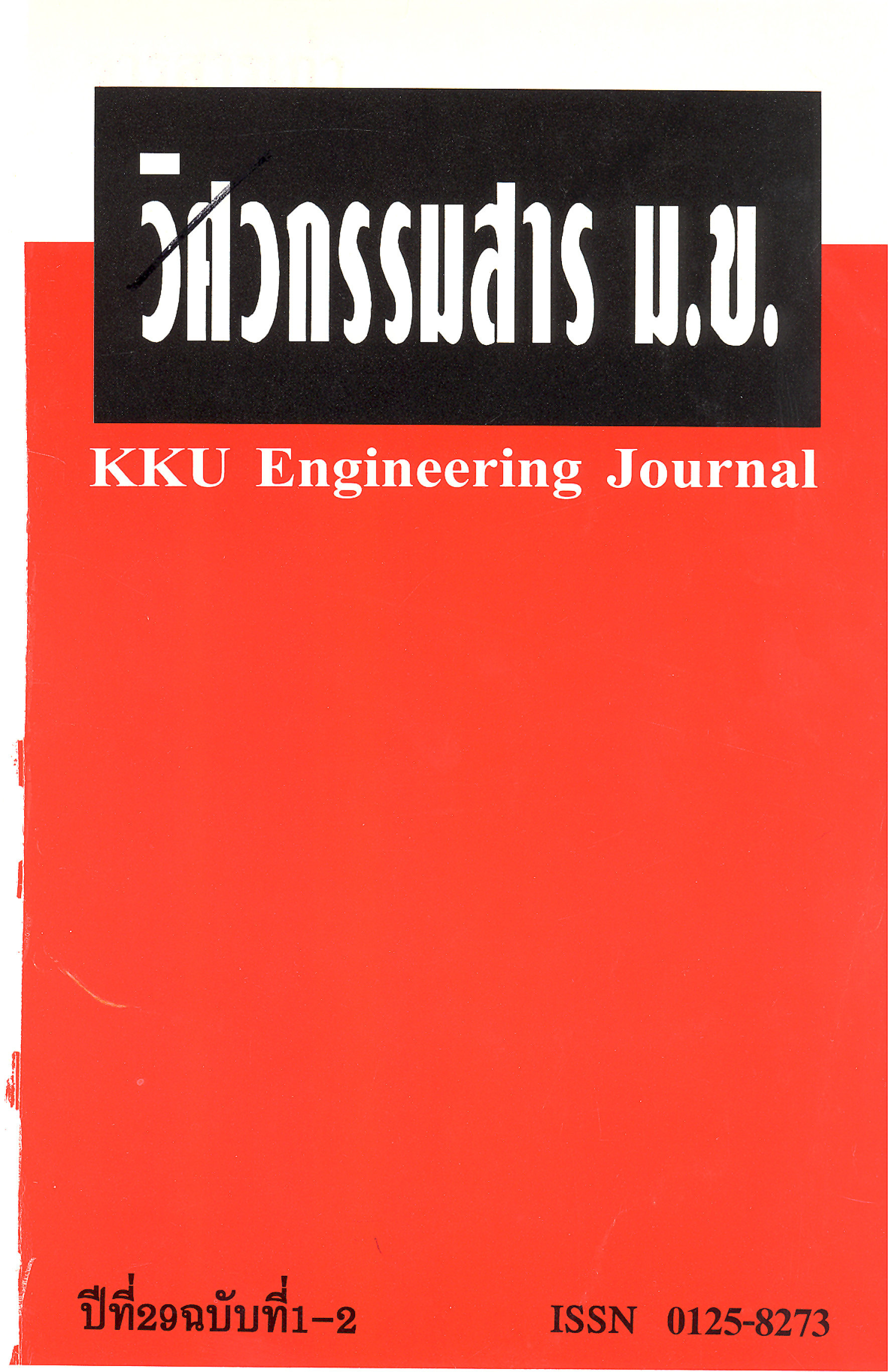A Study of Activated Carbon Production from Rice Husk
Main Article Content
Abstract
The purpose of this research work was to produce activated carbon from rice husk by steam and sodium hydroxide activation process. The temperature range of activation was 400-700ºC and the duration time of activation was 1-2 hours. This research work was also concerned on the process of producing activated carbon from rice husk without activation in order to compare the effect of activation process on the properties of the obtained activated carbon. The optimum process condition for activation such as temperature and time were determined. The properties of activated carbon carbon such as BET surface area and amount of toluene adsorption were analyzed. The reslts show that the optimum condition for steam activation was 700 ºC for 1 hour giving the surface area of approximately 421 m2/g and the capability to adsorb toluene solvent and toluene vapor were 11.92% and 7.94% (by wt.)respectively. The optimum condition for sodium hydroxide activation was 500 ºC for 30 minutes giving the activated carbon with surface area of 347 m3/g and the amount of toluene adsorption on this activated carbon was 23.53% and 51.95% (by wt.) for toluene solvent and toluene vapor respectively. These results, in turn, indicate that sodium hydroxide activation produced activated carbon with higher adsorption for toluene vapor comparison with activated carbon from steam activation process. In addition, it was found that the adsorption capacity of toluene solvent was very low for all conditions. Thus, it is suggested that activated carbon produced from rice husk was not suited to adsorb toluene solvent.
Article Details
This work is licensed under a Creative Commons Attribution-NonCommercial-NoDerivatives 4.0 International License.



